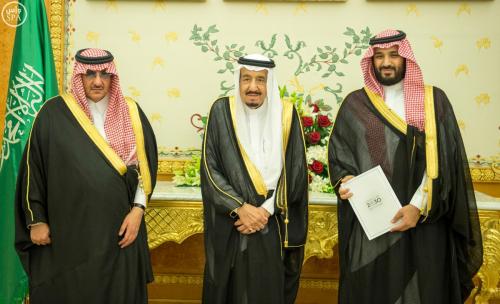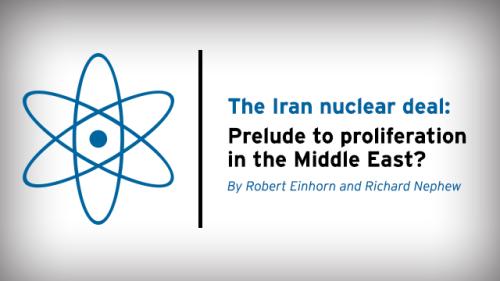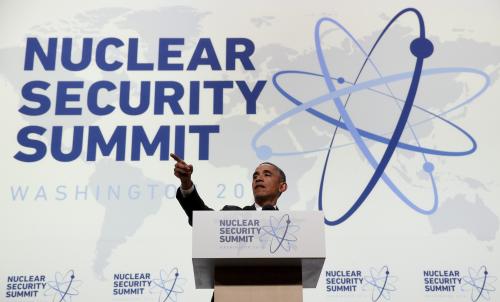Over fifty heads of state will meet at the Seoul Nuclear Security Summit on March 26-27. Among the participants is US President Barack Obama, host of the first nuclear security summit held in Washington, DC, in April 2010.
The primary motive for convening the 2010 nuclear security summit was to address the unprecedented threat of nuclear materials in the hands of terrorists. This remains the main task of the summit, but two other security problems will be on the minds of participants: the Fukushima catastrophe of 2011 and the nuclear programs of North Korea and Iran.
The nuclear crises in the Middle East and Northeast Asia and the stalled promise of a nuclear renaissance in civil nuclear power could all be solved by a more rational approach to the generation of electric power. Although it will take years before the current, outdated system is replaced, the Seoul meeting could provide a political impetus. The new system would rest on three legs: small modular reactors (“mini-reactors”), internationally managed nuclear fuel services, and increasing reliance on the distributed (local) generation of electricity. After the disaster in Fukushima, there has been an understandable retreat from plans for large-scale reactors, with their inevitable safety issues. A vivid example of this reaction is found in Germany, which has cancelled its plans to increase the generation of electricity from nuclear reactors even though they are cleaner and more dependable than most other sources currently available. Vulnerabilities and inefficiencies of long-distance transmission lines point to a paradigm for generation and distribution of electric power that is more local – connected to national grids, to be sure, but able to operate independently of them. This is an ideal situation for mini-reactors, which are safer and less prone to encourage the spread of nuclear weapons. Internationally managed nuclear fuel services already exist and the security of supply can be assured by policies that foster more fuel service centers in Asia and elsewhere, including in the United States. These factors would enable suppliers of mini-reactors to expand their business to nations like North Korea and Iran under IAEA safeguards.
The relevance of this energy paradigm to resolving the issues in North Korea and Iran is evident: both nations could develop civil nuclear programs with assured supplies of nuclear fuel from multiple internationally managed fuel service centers in Russia, China, and Western Europe while avoiding the ambiguity of nationally operated plutonium reprocessing and uranium enrichment. Reliance on distributed generation of electricity would be more efficient and less prone to blackouts. And the presence of a level playing field should be apparent from the fact that similar arrangements would be the 21st-century way of generating electricity from nuclear energy in the developed economies as well as in energy-starved economies such as India and China.
Is this vision nothing but a dream? Maybe, but the main issues standing in the way are neither technical nor economic, but political. That is not to say that political problems are easy to solve. Einstein famously said that politics is harder than physics.
Politics will be front and center at the summit because it takes place in one of the major capitals of Northeast Asia, and all heads of state from this region or engaged with it – North Korea excluded – are participating. This will open opportunities to discuss regional problems in a situation quite different from that of the first nuclear security summit in Washington in 2010.
Northeast Asia is one of the most dangerous hotbeds of global nuclear diplomacy. China and Russia are nuclear weapon states; the United States, also a nuclear weapon state, is a regional political actor; North Korea has conducted two nuclear weapons tests; and Japan, South Korea, and even Taiwan can “go nuclear” in a relatively short period of time.
The Seoul summit could, at least indirectly, become a launching pad for settling this fatal situation.
One can never be certain when it comes to Korean developments, but new hope has arisen after the United States and North Korea reached an agreement on a North Korean moratorium on nuclear activities in Beijing on February 29. This may be a modest step forward, but it is encouraging. Fulfillment of this understanding would open the door to resumption of the six-party talks, where a framework already exists to discuss the elements of a political settlement: commitment to a nuclear-weapons-free Korean Peninsula, an interim agreement on borders and means of ready communication between the parties, people-to-people contacts, economic cooperation, and a Northeast Asia organization for security and cooperation akin to the Helsinki process, including its human rights provisions. It can be considered the first major signal by the new Kim Jong-un regime in Pyongyang that they are open to direct dialogue with the Americans.
There will be a shift of power in South Korea in early 2013, when the term of President Lee Myung-bak comes to an end. The United States will hold its presidential and congressional elections in November, Vladimir Putin has just been elected president of Russia, and China will have a new president in 2013. As for Japan, changes in government seem to occur several times a year.
All of these changes cause observers of the Northeast Asian scene to conclude that the time for a more active diplomacy in the Korean Peninsula is approaching. And that refers not only to solving the North Korean nuclear issue but also to several legacies dating from World War II and the Korean War. The ultimate goal should be to sign a peace treaty to end formally the Korean War, which concluded only with an armistice agreement in 1953, and to reunify Korea in one way or another.
There is some well-founded hope that the year 2012 could open a new era in multilateral efforts to finally construct a new post-Cold War political and security architecture in Northeast Asia.
Europeans have a low profile in Northeast Asia. Almost all EU-member states, however, have diplomatic relations with North Korea, and a number of major European states have resident ambassadors in Pyongyang.
The successful post-war arrangements in Europe have often been held up as an example of how a multilateral peace process could be initiated in Northeast Asia. The Finnish experience of the Helsinki CSCE (Conference on Security and Cooperation in Europe) in 1969-75 proved that patience and determination will bear fruit in the long run. Perhaps this is also a good recipe for Northeast Asia.



Commentary
The Seoul Nuclear Security Summit: New Thinking in Northeast Asia?
March 28, 2012